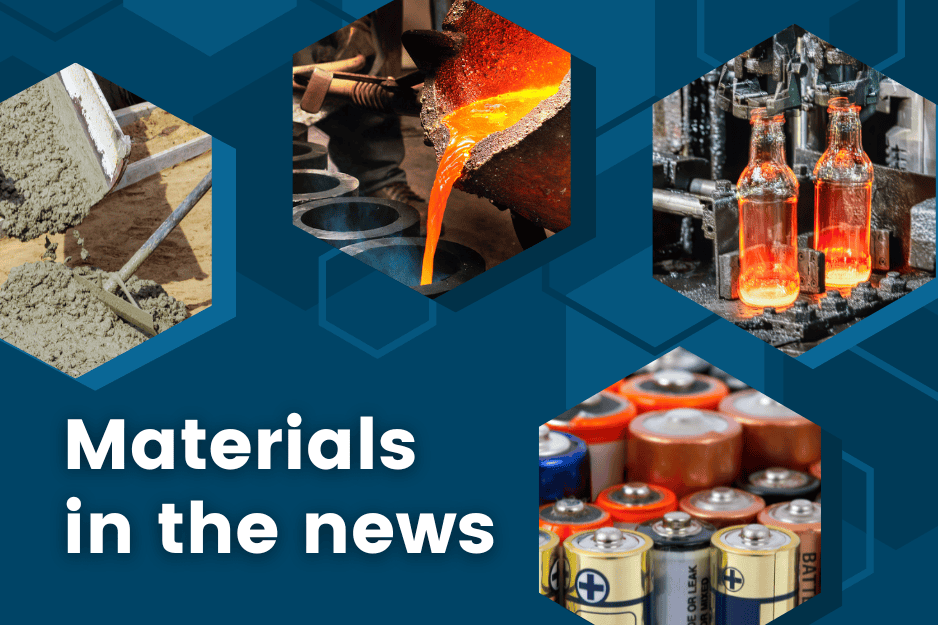
[Images above] Credit: NIST
NANOMATERIALS
How do you take a better image of atom clouds? Mirrors—lots of mirrors
To capture as much information as possible about clouds of atoms at the heart of the MAGIS-100 experiment, scientists devised a dome of mirrors that gathers more light from more angles.
Engineers push nanostructure properties to new extremes
Researchers at University of California, Irvine increased the energy absorption and strength of nanoarchitected structures by fabricating interpenetrating phased composites.
Glass nanoparticles show unexpected coupling when levitated with laser light
Researchers at University of Vienna, Austrian Academy of Sciences, and University of Duisburg-Essen demonstrated previously unattainable levels of control over the coupling in arrays of particles, thereby creating a new platform to study complex physical phenomena. The secret trick behind this new behavior is “coherent scattering.”
ENERGY
Evolar claims 25-year stability for perovskite cells
Swedish startup Evolar put its perovskite cell technology through industry-standard accelerated reliability testing. It said its results show that the cells would likely remain stable for more than 25 years in the field.
Aluminum-sulfur batteries could provide low-cost backup storage for renewable energy
Researchers led by Massachusetts Institute of Technology developed an aluminum-sulfur battery featuring a molten salt electrolyte. They showed that the battery cells could endure hundreds of cycles at exceptionally high charging rates, with a projected cost per cell of about one-sixth that of comparable lithium-ion cells.
Understanding how rechargeable aqueous zinc batteries work
University of Illinois Chicago engineers and colleagues identified the atomistic mechanism of charge and discharge in rechargeable zinc-manganese dioxide batteries using advanced electron microscopy, electrochemical experiments, and theoretical calculations.
BIOMATERIALS
Measuring currents in the heart at millimeter resolution with a diamond quantum sensor
Researchers from Tokyo Tech and University of Tokyo developed a diamond quantum sensor that senses the heart’s magnetic fields at millimeter-scale resolutions. The technique could help deepen our understanding of several cardiac arrhythmias.
Detonation nanodiamonds could deliver nanoscale thermometry inside cells
Through an explosive technique, Kyoto University researchers produced the smallest nanodiamonds to date, capable of probing microscopic temperature differences in their surrounding environments.
ENVIRONMENT
By design: From waste to next-gen carbon fiber
Washington University researchers chemically altered lignin to improve its potential to make lighter, stronger carbon fiber. Lignin is a compound that is essential for most plants but considered a waste product by industry.
Recycled wind turbines could be made into plexiglass, diapers, or gummy bears
Michigan State University researchers developed a binding resin for wind turbine blades that can be recycled back into another turbine blade or downcycled into a composite material used to make plastic products.
Recycled glass ‘sand’ could help protect Louisiana’s vanishing coast
A New Orleans nonprofit and Tulane University researchers are using mounds of pulverized glass to try to slow down coastal land loss in Louisiana. Several factors have sped up the catastrophic disappearance of Louisiana’s coast, including oil and gas drilling, tropical storms, and sea level rise brought on by climate change.
California to cover canal with solar panels in experiment to fight drought, climate change
California is about to launch an experiment to cover aqueducts with solar panels, a plan that if scaled up might save billions of gallons of otherwise evaporated water while powering millions of homes.
MANUFACTURING
Scientists 3D print a conductive silicon carbide ceramic
Researchers fabricated 3D-printed electrically conductive silicon carbide ceramic architectures via vat photopolymerization that simultaneously possess low thermal conductivity and high electrical conductivity.
OTHER STORIES
Glasses in a fraction of a second
In an Optica feature article, ACerS Fellow S.K. Sundaram reviews the development of ultrafast lasers for studying and processing glasses.
High-efficiency fluorescent glass material capable of reducing light loss
Researchers developed the world’s first fluorescent glass material with a refractive index of 1.7 capable of reducing light loss in manufacturing light-emitting diodes and increasing light emission efficiency.
Foldable and recyclable paper electronics
Researchers at Universidade Nova de Lisboa developed a cellulose-based nanopaper that is highly flexible, mechanically robust, and has a very smooth surface. By dissolving cellulose with something that allows electricity to pass through it, such as liquid lithium, they created a blended material that can also store energy and conduct electrical current.
DeepMind’s AI may not be as good for fractional-charge systems as it seems
Researchers from Skoltech, Zelinsky Institute of Organic Chemistry, HSE University, Yandex, and Kyungpook National University showed that DeepMind AI’s ability to describe electron interactions in chemical systems does not follow from the published results and requires revisiting.
Author
Lisa McDonald
CTT Categories
- Weekly Column: “Other materials”
